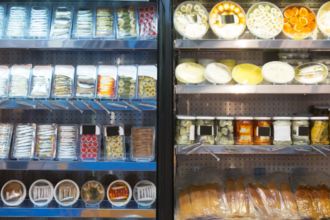B2E Technological Sonar Initiative #18
B2E presents the eighteenth edition of our Technological Sonar initiative, a monthly selection of national and international initiatives to retain, within the scope of new patents and technologies in the blue bioeconomy sector.
Aquaculture
- Improved Aquaculture Feed Additive
A feed additive suitable for use in commercial aquaculture, made from whole dried seaweed powder supplemented with 2.5 percent (w/w) andrographolide, increases feed conversion ratio (the ratio of weight gain to weight of feed used) and growth rate, while reducing vulnerability to water-borne marine pathogens such as Piscirichettsia salmonis and white-spot syndrome virus.
In Espacenet
Discover more here.
- Are we moving closer to fish-free feed?
Recent trials from the F3 Innovation Network found that it is feasible and economically viable for aquaculture nutritionists to significantly reduce – or even eliminate – fish meal and fish oil from the diets of carnivorous fish species like largemouth bass, amberjacks, red drum and Florida pompano.
In The Fish Site
Discover more here.
- An Aquaculture Feed With High Water And Oil Content And A System And Method For Manufacturing Said Aquaculture Feed
The present invention relates to a system and a method of manufacturing a feed product for farmed animals in an aquaculture environment, including but not limited to fish, shrimps, and crabs.
In Patenscope
Discover more here.
Living Marine Resources
- Bioactive Molecules from Marine Diatoms and Their Value for the Nutraceutical Industry
This review focuses on studies exploring Diatoms bioactive molecules bio-pharmacological activities when relevant for human disease prevention and/or treatment. In addition, we considered diatoms and their extracts (or purified compounds) when relevant for specific nutraceutical applications.
In NCBI
Discover more here.
- Process For Reducing The Fluoride Content When Producing Proteinaceous Concentrates From Krill
Fluorine being present in the exoskeleton of crustaceans, and especially krill represents a problem for using krill as a source for food, feed, food additives and/or feed additives. There has been developed a process for removing such fluorine from krill material by subjecting the krill to disintegration and to an enzymatic hydrolysis process prior to or simultaneously with a removal of the exoskeleton particles producing a fluorine-reduced product. Inherent in the disclosed process is the ability to process krill material with a high polar lipid content for producing superior quality, low fluorine, products suitable for the food and feed as well as the pharmaceutical, nutraceutical and cosmetic industry.
In Espacenet
Discover more here.
- Novel source of microalgal lipids for infant formula
Microalgae have been recently suggested as an alternative source of lipids for infant formulations to produce a similar fatty acid profile and esterification pattern found in human milk.
In Science Direct
Discover more here.
Marine Biotechnology
- Allergy Antigen And Epitope For Same
The present invention relates to a kit, a composition, and a method for diagnosing allergy to fish, also relates to a pharmaceutical composition comprising such an antigen, fish, fish egg or processed products of such fish or fish egg in which such an antigen is eliminated or reduced. The present invention further relates to a tester for determining the presence or absence of a fish antigen in an object of interest.
In Espacenet
Discover more here.
- Bacteriophage Compositions For Treating Clostridium perfringens Infections
The invention relates to the field of phage therapy. It particularly relates to providing phages, phage-based compositions and methods for treating or preventing bacterial infections, particularly C. perfringens, in animals, including humans, aquaculture and livestock. The invention also relates to uses of the compositions as a feedstuff and as a biological decontaminator in feed and food products for human and animal consumption.
In Espacenet
Discover more here.
- Marine enzymes: Classification and application in various industries
Enzymes are a group of marine biomaterials that have recently drawn more attention because they are produced in harsh environmental conditions such as high salinity, extensive pH, a wide temperature range, and high pressure.
In NCBI
Discover more here.





